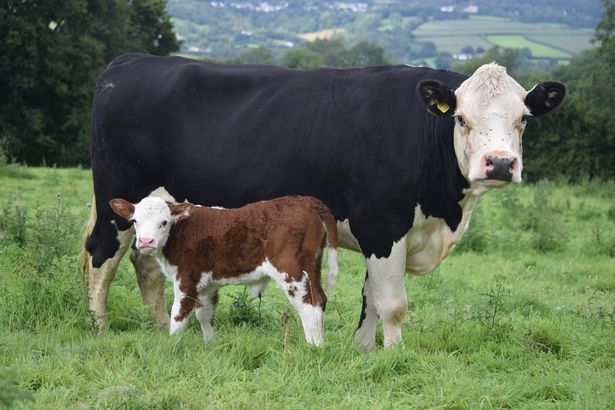AN agricultural expert is warning North West walkers and farmers to stay vigilant in the vicinity of livestock and their young this summer, to avoid endangering lives and jeopardising livelihoods.
Rupert Wailes-Fairbairn, of rural insurance broker Lycetts, is urging the public and farmers to take steps to protect themselves, ramblers and livestock, as the trend for countryside walking sets to continue post-lockdown.
Government figures show that by summer 2020, 39 per cent of people were walking more than before the pandemic struck – with 94 per cent claiming they would continue once travel restrictions were removed.
The growing popularity of staycations also poses a risk. Department of Transport figures revealed that 20 per cent of respondents would plan more holidays in the UK post-lockdown, leading to a long-term rise in summertime countryside walkers.
Rupert is urging the public to follow the recently updated Countryside Code, particularly as livestock are now being sent out to pasture with their young, and for farmers to take precautions to keep the public and livestock separate and safe.
Rupert said: “It’s important for people to remember that much of the countryside is working land and that their actions impact the lives and livelihoods of others – along with their own safety.
“As well as being courteous to those who farm the local land, it is important to be fully aware of the risks that come with visiting the countryside.
“Even the most placid farm animals can become dangerous when they are stressed, with adverse weather, illness, disturbance, or maternal instincts just some of the triggers. Farmers understand and recognise signs of stress – but many members of the public don’t.
“Sadly, every year people are seriously and fatally injured by livestock and walkers should never underestimate these animals, particularly at this time of year, when cattle have calves at foot and protective maternal instincts are at play.
“When journeying to the countryside, use maps to plan ahead and read signs to help find your way and ensure you don’t trespass or enter fields where at-risk livestock are present. Stay on marked paths where possible and use gates, stiles or gaps in field boundaries.
“Always remember to leave gates as you find them. Farmers close gates to keep animals in or leave them open to give access to food and water. Do not interfere with livestock and give them plenty of space.
“Finally, do not let dogs off the leash where livestock is present and keep them away from animals at all times.
“Should you ever find yourself in the unfortunate situation where you and your dog are surrounded by cattle – particularly if they are with their young – and you sense danger, this is the only time you should let go of your dog. Though it is instinctual to protect your dog by holding it close, the livestock will likely be more interested in your pet and chase it, diverting the danger.”
Over the past five years, 24 people were killed by animals in the agricultural industry, with members of public amongst the deaths, according to the Health and Safety Executive.
Eighteen of these deaths were caused by cattle and six by bulls.
Whilst walkers should take care, Rupert pointed out that it is equally important farmers take precautionary steps to prevent the public from accessing areas where animals are residing.
Farmers who keep livestock in fields crossed by public rights of way may face prosecution if walkers are injured by their livestock, and negligence is proved.
“Flouting health and safety rules and inadequate risk management is a threat to public safety and could put the viability of a farmer’s business in jeopardy,” added Rupert.
“Being vigilant will help keep walkers safe and may reduce farmers’ liability, should an incident occur.
“Wherever possible, farmers should keep cattle in fields that do not have public access, especially when cattle are calving or have calves at foot and during periods of high footfall.
“When it comes to bulls, certain breeds, for example Ayrshire, Friesian, Holstein, Dairy Shorthorn, Guernsey, Jersey and Kerry, are in all circumstances banned from being at large in fields crossed by public rights of way. Beef bulls are banned from fields with footpaths unless accompanied by cows or heifers.
“For bull breeds that are permitted, consider the animal’s temperament and keep an eye on its demeanour. Remove it from the field if its behaviour begins to give cause for concern.
“Perimeters should be well-maintained, with farmers checking daily for signs of damage. When moving cattle, pre-plan the journey, making efforts to limit contact with members of the public and to warn any passers-by to stay back at a safe distance.
“Farmers should erect appropriate signage, which is informative, accurate and in clear view of the public when animals are present – but take care not to avoid misleading signs which deter the public from exercising their right of responsible access, as these are likely to be regarded as obstruction.
“Finally, farmers should bear in mind that previously quiet rights of way may have become more populated. Greater numbers mean greater risk, so although incidents may not have occurred in the past, reviewing safety procedures and signage in light of the current circumstances is a must.”







